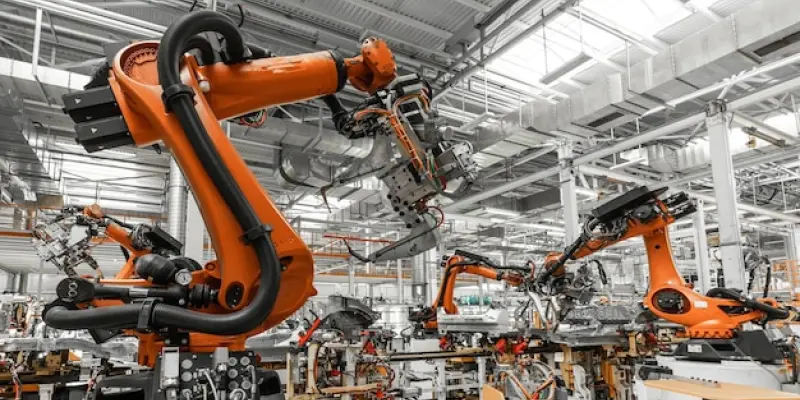Artificial intelligence (AI) and automation are reshaping the manufacturing landscape, promising increased efficiency and innovation. However, these technological advancements also bring concerns about job security among workers. A Pew Research Center survey found that about one-third of U.S. respondents fear that AI could reduce job opportunities. At the North American Manufacturing Excellence Summit in Fort Worth, Texas, industry leaders discussed strategies to address these concerns and integrate automation harmoniously into the workforce. By exploring how companies like John Deere Power Systems and Procter & Gamble handle the transition, we gain valuable insights into the benefits and challenges of adopting AI and automation in manufacturing.
Mitigating Workforce Concerns
Manufacturing leaders are acutely aware of the workforce’s apprehensions regarding AI and automation. To alleviate these concerns, companies are implementing technologies that streamline repetitive and monotonous tasks. For instance, AI-driven systems can handle part-picking or process extensive business documentation, allowing human workers to focus on more complex and innovative tasks. Such advancements enable factories to operate shifts without human supervision, potentially leading to a shorter work week.
John Deere Power Systems exemplifies this approach by utilizing autonomous business technologies to enhance workforce capacity. Instead of eliminating jobs, John Deere enables employees to engage in more stimulating activities. AI tools assist supplier quality engineers in swiftly navigating warranty claims, reducing the time required from 15 hours to just two hours. This significant time savings allows employees to concentrate on tasks that drive innovation and creativity. By naming their robots and humanizing the technology, John Deere encourages a playful and experimental culture, reducing worker resistance to these changes.
Procter & Gamble (P&G) has also successfully implemented robotics and automation, resulting in a shorter manufacturing work week in its Berlin factory. This initiative transitioned from five eight-hour shifts to a four-day work week with two ten-hour days, facilitated by a four-hour unattended night shift. The change not only reduces operational costs but also enhances employees’ work-life balance. Inspired by the success at the Berlin site, P&G has extended similar initiatives to six to eight other plants, highlighting a broader trend towards more flexible and efficient working models.
Embracing Technological Advancements
To foster a culture that embraces AI and automation, manufacturing leaders emphasize the importance of demonstrating the value proposition to employees. Rather than perceiving technology as a threat, workers are encouraged to view it as an opportunity for professional growth and innovation. By promoting a growth mindset, companies seek to build an environment where technology and human skills complement each other.
The North American Manufacturing Excellence Summit highlighted several strategies to cultivate this mindset. By focusing on reducing tedious tasks and creating more engaging work environments, companies aim to assuage workforce fears. Encouraging employees to participate in training programs and upskill in new technologies helps bridge the gap between human capabilities and automated processes. This approach not only enhances job security but also positions workers for future career advancements.
Moreover, examples from industry leaders demonstrate how AI and automation can yield tangible benefits. At John Deere, the implementation of AI tools has optimized operations while maintaining a robust workforce. Procter & Gamble’s success in Berlin shows how automation can lead to more sustainable and flexible work schedules. These case studies underscore the potential of AI and automation to transform manufacturing processes positively.
Future Considerations for the Industry
As the manufacturing industry continues to evolve, the integration of AI and automation will play a pivotal role in shaping its future. The key to successful adoption lies in balancing technological advancements with the needs and concerns of the workforce. Manufacturing leaders must continue to prioritize job security and employee well-being while leveraging the benefits of AI and automation.
To achieve this balance, companies can explore several strategies. Enhancing communication between management and employees helps in addressing fears and clarifying the advantages of new technologies. Additionally, providing ongoing training and development opportunities ensures that workers remain competitive in an increasingly automated landscape. By fostering a culture of continuous learning, companies can empower employees to embrace technological changes confidently.
Investing in collaborative technologies that facilitate human-robot interaction is another crucial consideration. These technologies can enhance productivity while maintaining the human touch in manufacturing processes. By positioning robots as valuable assistants rather than replacements, companies can create a harmonious working environment where both human and machine contributions are valued.
Conclusion: Navigating the Future of Manufacturing
Artificial intelligence (AI) and automation are transforming the manufacturing industry, offering promising enhancements in efficiency and innovation. However, these advancements also raise significant concerns about job security among workers. According to a Pew Research Center survey, nearly one-third of U.S. respondents expressed anxiety that AI might shrink job opportunities.
At the North American Manufacturing Excellence Summit in Fort Worth, Texas, industry leaders convened to discuss strategies for addressing these concerns and achieving a harmonious integration of automation in the workforce. By examining how companies such as John Deere Power Systems and Procter & Gamble are navigating this transition, we gain valuable knowledge into the benefits and potential challenges associated with adopting AI and automation in manufacturing. Their approaches provide indispensable insights into striking a balance between leveraging technology and maintaining job security for workers, ensuring that the workforce evolves alongside these technological advancements.

